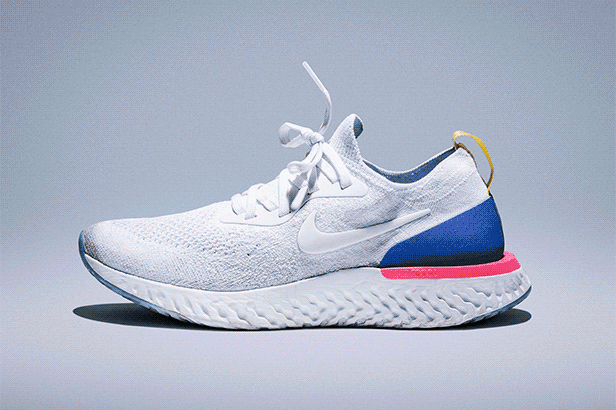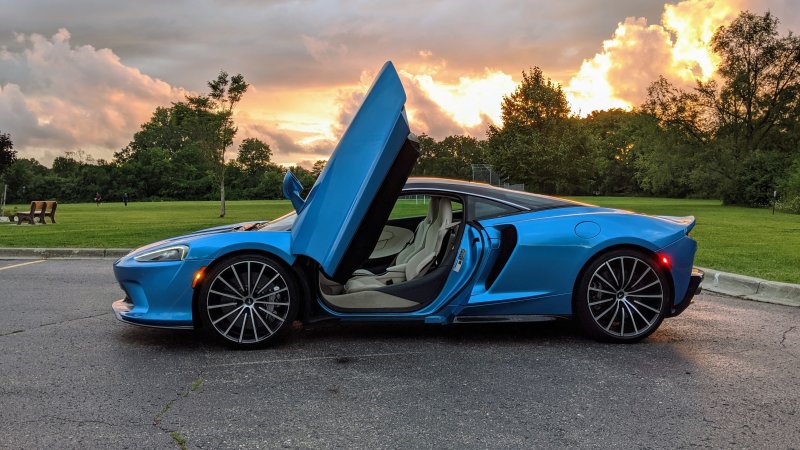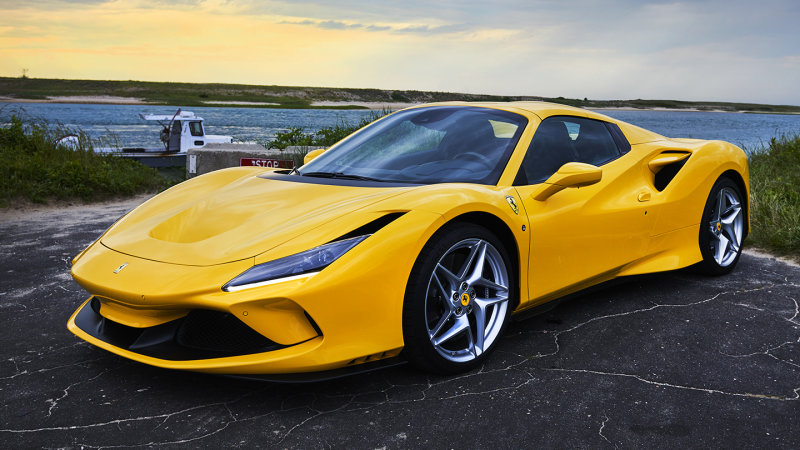The Light L16 is a compact camera, about the size of several smartphones fused together, that uses different combinations of 16 lenses of varying focal lengths to capture individual high-resolution images. Its major feat is offering a huge zoom capability of 28mm to 150 mm in such a small package, as well as granular control of the camera settings entirely through the rear touchscreen. The technical achievements are significant: compressing long-focal-length lenses into a slim body through mirror-intensive folded optics, and software that can merge images from different sensors into usable final shots. The question is whether it’s worth it – does the L16 provide a benefit that conventional cameras, whether smartphone, compact, or interchangeable-lens, cannot match?
The Good: The wide zoom range of 28mm to 150mm provides great versatility when composing shots, and the robust 52-megapixel final product, stitched together from different combinations of the lenses and sensors on the face, gives you a lot to work with while editing. This includes a high dynamic range of 13 stops, achieved by taking multiple exposures at different values, and the depth-of-field control that allows you to shift focus later. (The images are shot at f/15, but adjustable down to f/2.) Also, the integration of all controls, save the shutter button, and the five-inch touchscreen makes for a very clean, attractive design.
Who They’re For: Photography enthusiasts who like to travel light, but want more versatility than just a smartphone can provide. It’s also for well-heeled early adopters, those willing -— or excited — to invest in radical new technology and exploit its innovation in clever and creative ways, and be willing to deal with compromises that may emerge. In short, you have to not just want a compact new camera; you have to want this one.
Watch Out For: Lots of things: 1) that $2,000 price tag is extraordinarily steep for what’s essentially a pocket camera. 2) Processing artifacts, as when images from multiple lenses are digitally combined, leading to slight mismatches in alignment and exposure. 3) Real-world usability, which suffers slightly as a result of the touchscreen integration of functions. If you’re shooting in a hurry, having to make exposure changes via a touchscreen is always a slowdown compared to mechanical controls on the camera body. 4) Poor low-light performance: Much like smartphones, the camera loses its edge when the sun goes down. 5) The fact that people will stare at you. The array of lenses on the front looks distinctly insectoid, drawing the curious or revolted. On the other hand, that makes it quite a conversation-starter, for sure. 6) Finally, it even feels kind of alive, too, with the mirrors in the folded-lenses twitching almost constantly as they try to focus on subjects. That can be distracting, and kind of creepy.
Alternatives: Other compact and versatile cameras that are competitive with the Light L16 include: Sony RX100 VI ($1,199), Canon Powershot G3 X w/ Electronic Viewfinder ($950) and Panasonic Lumix ZS200 ($750)
Review: I traveled with the L16 on several trips and found it enjoyable in many ways to use – and frustrating in just as many other ways. To start, the performance range is absolutely there, compressing legitimate 150mm optical zoom capability into a lean box, thanks to the mirrors and horizontal light tubes at the longer lenses that bounce light around a bit before directing it to each sensor. Typically, a 150mm lens will be much larger and longer, so that compression allows you to do quite a bit more kinds of shooting without humping all the extra gear around. It also does indeed offer a sizable dynamic range, so you can shoot scenes with large variances in light and dark subjects and get good results, though overall low-light performance isn’t great.
The camera incorporates 16 separate camera modules in all—five 28mm modules, five 70mm modules, and six 150mm modules – 10 or more of which it will use to generate different exposure settings, establish a depth map for later focus adjustment, and to punch up resolutions. Because of all this mass, it’s more of a chore to lug around than you might think. While compact, the L16 is still pretty heavy, given the density of the packaging. It’s not something you can stuff into your pocket without noticing all the time—though that’s less true if you’re using a jacket pocket, rather than just, say, cargo pants. This is one of the few times I’d advocate for a secure sleeve you can attach—phone-nerd style—to your belt. Hate all you want, but that’s probably the best way to tote a flat brick around.
Photo comparison: How does the Light L16 compare to a mirrorless camera? Check it out. The above photos are taken with the Light L16 (left) and the Sony A7RII (right).
In terms of usability, it’s mostly a win. The camera has a big, bright rear LCD, with good shutter-button placement and a solid grip area to the right. When you pull it out to shoot, you wake up the Android-powered device by tapping the power button, and then hit the shutter to take a photo. (You can leave it on more or less permanently, as with a smartphone.) You can choose auto, manual, shutter-priority, or ISO-priority modes—there’s no aperture priority since it captures a range from f/2 to f/15. Set focus and exposure via a tap on the LCD or simply allow it to center-focus, which is my usual strategy. (In that case, you find the area you want to be most properly exposed -— the sky, say -— push the button halfway to lock it in, then recompose the shot how you like.) To zoom, you swipe up and down, and the readout scrolls through the millimeter ranges in increments of one, so you can dial it in very precisely. If you instead want to dig into the image folder, you need to enter a passcode first, which can be annoying if you’re spending a day actively shooting, checking photos, etc. To put it back to sleep, just tap the power button again. Overall, it’s quick and easy enough to use that the camera itself was never a deterrence or a hindrance to getting the shot.
In many ways, the Light L16 feels like a solution in search of a problem – technology that exists because someone figured out it could exist, not because they arrived at it organically while trying to solve a problem.
Image-processing and editing is another story. You can do some basic image developing to the JPGs in the camera itself, and you can offload images from the 256GB onboard storage via Bluetooth for quicker uploading to social channels -— though at the moment that’s reserved for Windows and Android devices. Because the images have an adjustable focus, you can only do that via Light’s proprietary image editing software, Lumen. It’s a bare-bones tool that’s rather slow and clunky, and no match for the likes of Adobe Lightroom, the world’s go-to photo editor. The image files are huge, which explains the challenge. It’s so slow, in fact, that I could barely hang with it while it opened files, reacted to editing clicks and then took a relative eternity to export the photos. (Unlike Lightroom, it only exports one image at a time.) I eventually settled on a hybrid workflow – if I knew the focus was right, I simply went straight to Lightroom. Otherwise, I’d adjust focus, export, then do the bulk of my editing in Lightroom. That was also good because Lightroom has a greater range of tools, including the incredibly useful “highlights” adjustment for tamping overexposed areas of the image.
The real test, of course, is image quality. In good lighting conditions, you’ll get great results – crisp images with excellent exposure, color and contrast, all of which can be nicely pushed in assorted directions after the fact. In less-than-ideal conditions, your results will vary. There were plenty of shots that felt strained and not quite there in terms of detail and focus. Part of this you can dial out just by getting used to the camera. For instance, tight zoom work at 150mm pretty much demands a solid mounting, either via a tripod or resting the camera on something. Others are simply the system being pushed and strained by the lighting conditions or the fairly limited sensor sizes.
On the most basic level, the camera works as advertised -— it provides the versatility of a larger rig in a small package, and it integrates modern user-interface technology and smartphone functionality in the service of making pictures. Does the final product meet or exceed the investment? That depends on what you’re looking for. If you’re a serious photographer who demands sharpness across the field, excellent low-light capability and pinpoint accuracy in color and exposure, then no, this camera isn’t for you. If you’re an enthusiast who doesn’t need that level of performance, then you might be pretty happy with it, assuming your pockets are deep enough to take the financial hit. It’s easy enough to tote around and generally better than a smartphone. If you’re purely a recreational shooter who just wants decent images produced automatically, there are plenty of compact, entry-level DSLR and mirrorless cameras that offer equivalent zoom capabilities in packages that aren’t truly that much larger and heavier. Indeed, a current smartphone comes pretty close to most of what the L16 can do, all things considered.
So ultimately, the question is what narrative the L16 is trying to sell, and which one you’re most interested in buying. At the moment, to me, it’s predominantly a really cool hardware and software story, but not quite enough of a true photography story.
Verdict: In many ways, the Light L16 feels like a solution in search of a problem – technology that exists because someone figured out it could exist, not because they arrived at it organically while trying to solve a problem. But even if that’s true — and I don’t truly think it is, after speaking to company leadership — it’s okay, because this is merely the first iteration of a fairly radical idea. There’s no doubt the technology will improve and come down in price, weight and complexity, in addition to being exploited in other commercial and industrial fields, including automotive, security and drone work. For now, the question is not whether the camera would replace pro-grade camera gear for serious shooters — there’s no chance of that — but simply whether it would be in any way an attractive alternative to a conventional camera or a smartphone for casual use. The answer to that: well, mostly yes.
Key Specs
Dimensions: 6.5 x 3.3 x 0.94 in. (165 x 84.5 x 24.05 mm).
Weight: 15.3 oz. (435 g)
Screen: 5″ FHD touchscreen
Tripod mount: Standard 1/4″-20tpi
Lenses: 16 individual modules, including 5 at 28mm and ƒ/2.0; 5 at 70mm and ƒ/2.0, and six at 150mm and ƒ/2.4
Sensors: 16 individual 13MP sensors
ISO sensitivity: 100 – 3200
Shutter speed: 1/8000 to 15 sec
Exposure modes: Auto, Manual, ISO priority, Shutter priority
Shutter release modes: Single-frame, self-timer, 3 and 6 shot burst
Flash: Dual-tone LED (no sync port/shoe)
Image formats: LRI, JPEG
Megapixels: Up to 52 million+ (52+ MP)
Capacity: 256GB
Hot takes and in-depth reviews on noteworthy, relevant and interesting products. Read the Story





